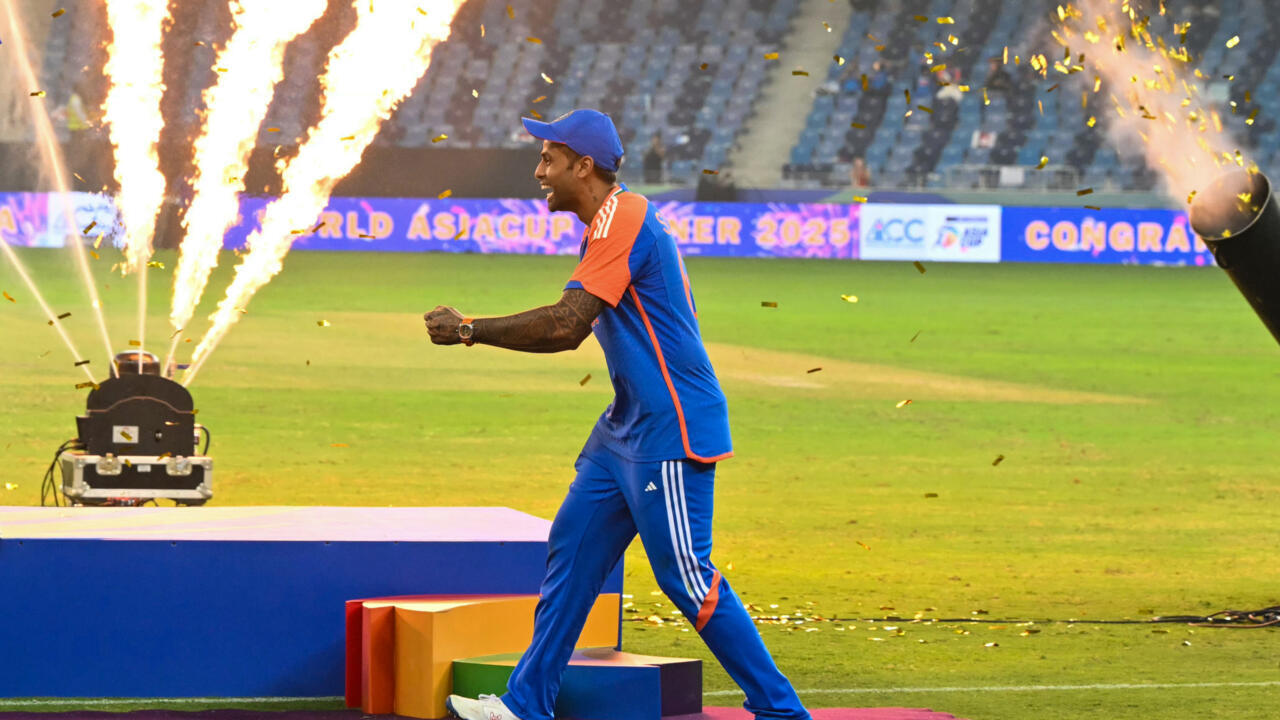Trophy Rejection Sparks Controversy
In a dramatic turn of events, the Indian cricket team declined to accept the Asia Cup trophy after defeating Pakistan by five wickets in the final played in Dubai on Sunday. The unusual decision came after it was revealed that the trophy presentation would be conducted by Pakistan’s Interior Minister Mohsin Naqvi, who also serves as the president of the Asian Cricket Council (ACC) and chairman of the Pakistan Cricket Board (PCB).
Although India celebrated their emphatic victory, the team refused to stand on stage with Naqvi, highlighting the simmering political and diplomatic tensions between the two neighbors.
Why Did India Refuse the Trophy?

According to Devajit Saikia, secretary of the Board of Control for Cricket in India (BCCI), the players had collectively decided not to accept the trophy directly from Naqvi.
“We made it clear that the Asia Cup champions’ trophy should not be presented by a senior Pakistani political leader,” Saikia told India’s ANI news agency. “This does not mean the trophy belongs to anyone else—it rightfully belongs to India. We expect it will be handed over to the team soon.”
The unusual standoff delayed the post-match ceremony. Television footage showed the trophy being quietly removed from the stage moments before the presentation began.
How the Final Unfolded
The final match concluded around 10:30 pm local time, but the award ceremony was delayed until midnight. While Indian cricketers such as Kuldeep Yadav, Tilak Varma, and Abhishek Sharma collected their individual prizes from other dignitaries, they avoided any interaction with Naqvi, who was also present on stage.
In contrast, Pakistan captain Salman Agha accepted the runners-up cheque directly from Naqvi. The moment highlighted the stark divide, as Indian players later celebrated their victory by pretending to lift an “invisible trophy” in front of fans.
Political Backdrop of the Asia Cup

The sporting clash cannot be separated from the ongoing strain in India-Pakistan relations. Tensions escalated earlier this year following the April 22 Pahalgam attack in Indian-administered Kashmir, which left 26 dead. India accused Pakistan-based groups of involvement, a charge Islamabad denied.
In response, both nations launched cross-border military operations in May, only halting after a ceasefire brokered by the United States. Diplomatic relations have since remained at their lowest in years, and cricket—often seen as a symbolic bridge—has instead become another battleground.
Rising Tensions During the Tournament
The Asia Cup itself was overshadowed by political undertones. Calls for India to boycott matches against Pakistan grew stronger in the weeks leading up to the tournament. While India ultimately played, the contests were charged with emotion.
-
After India’s opening win, captain Yadav dedicated the victory to the victims of the Pahalgam attack and the Indian armed forces.
-
During another match, Pakistan’s Haris Rauf taunted Indian fans with a “6-0” hand gesture, a reference to downed Indian jets in May’s aerial clashes.
-
Opener Sahibzada Farhan stirred controversy when he mimicked a gun-firing celebration after scoring a half-century, angering Indian supporters.
These symbolic gestures underscored how political animosities spilled onto the cricket field.
Leaders Exchange Sharp Words
Indian Prime Minister Narendra Modi praised his team’s triumph in a post on X (formerly Twitter), calling it “#OperationSindoor on the field—India wins again.”
The exchange further demonstrated how cricket continues to serve as an extension of political rivalry rather than a tool of reconciliation.
Cricket Diplomacy in the Past
Ironically, cricket has often been used as a platform for diplomacy between the two nations. In 1987, Pakistan’s then-President Zia-ul-Haq attended a Test match in India to ease tensions. Later, in 2011, Indian Prime Minister Manmohan Singh invited his Pakistani counterpart Yousuf Raza Gilani to watch the World Cup semifinal together—a gesture hailed worldwide.
Those efforts of “cricket diplomacy,” however, seem like a distant memory in the current climate.
Was India’s Refusal Predictable?
Experts believe India’s decision was not surprising. Since the ACC had already announced Naqvi would present the trophy, many anticipated some form of protest.
“Sports and politics often intersect, especially when it comes to India and Pakistan,” said Mathew John Moolakkattu, a researcher on cricket diplomacy. “India’s refusal reflects its broader strategy of distancing itself from Pakistan in every sphere—politics, trade, and now sports.”
Until relations improve, symbolic acts like refusing a trophy presentation are likely to continue, leaving cricket fans caught between passion for the game and the reality of geopolitical hostility.
Conclusion
India’s refusal to accept the Asia Cup trophy has turned a sporting victory into a political statement. While the players celebrated without the silverware, the incident underscored how cricket—once a tool of diplomacy—has now become another stage for rivalry between the two nations.
Whether the trophy eventually makes its way to India remains to be seen, but the episode has already carved its place in the history of cricketing controversies.
